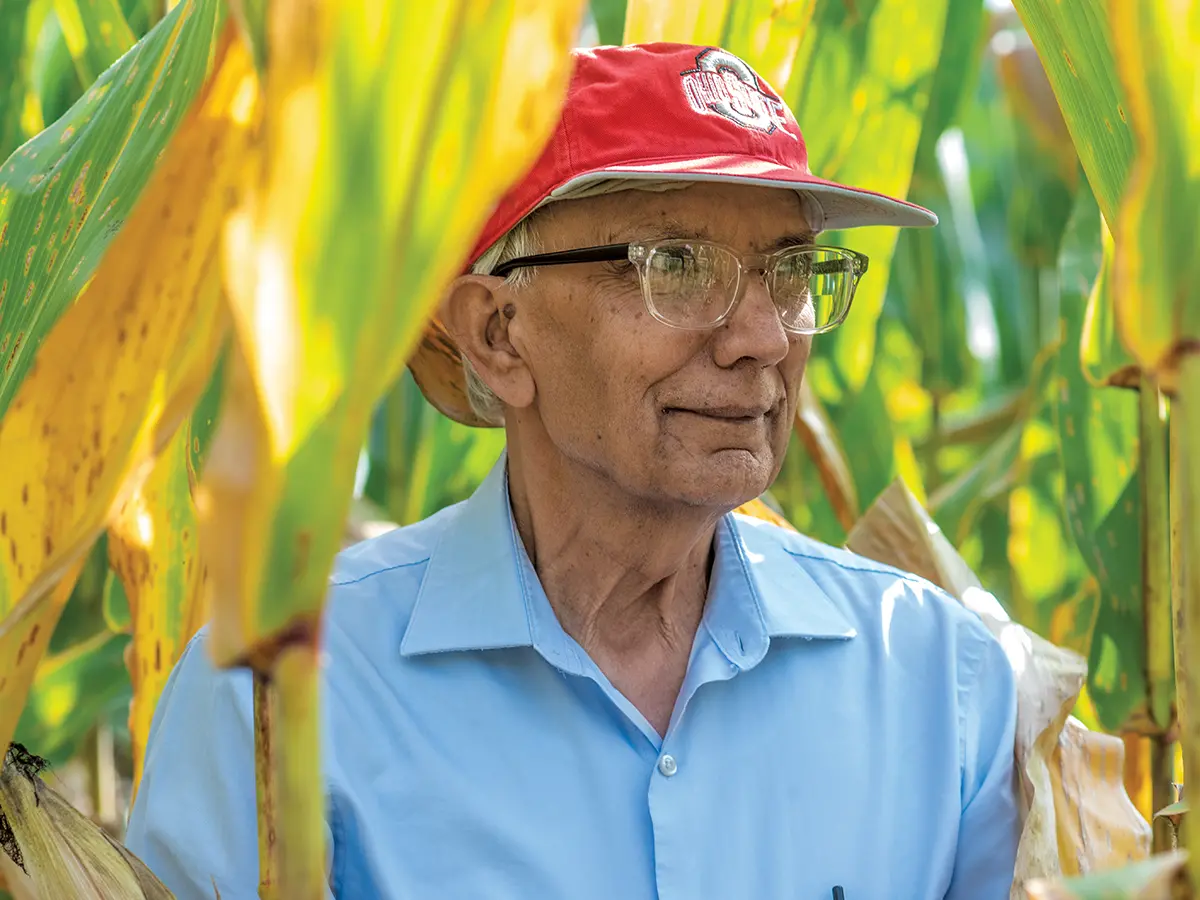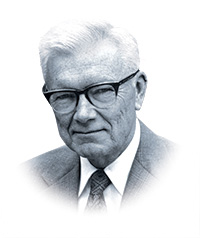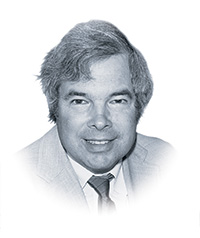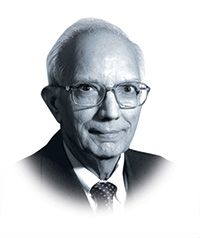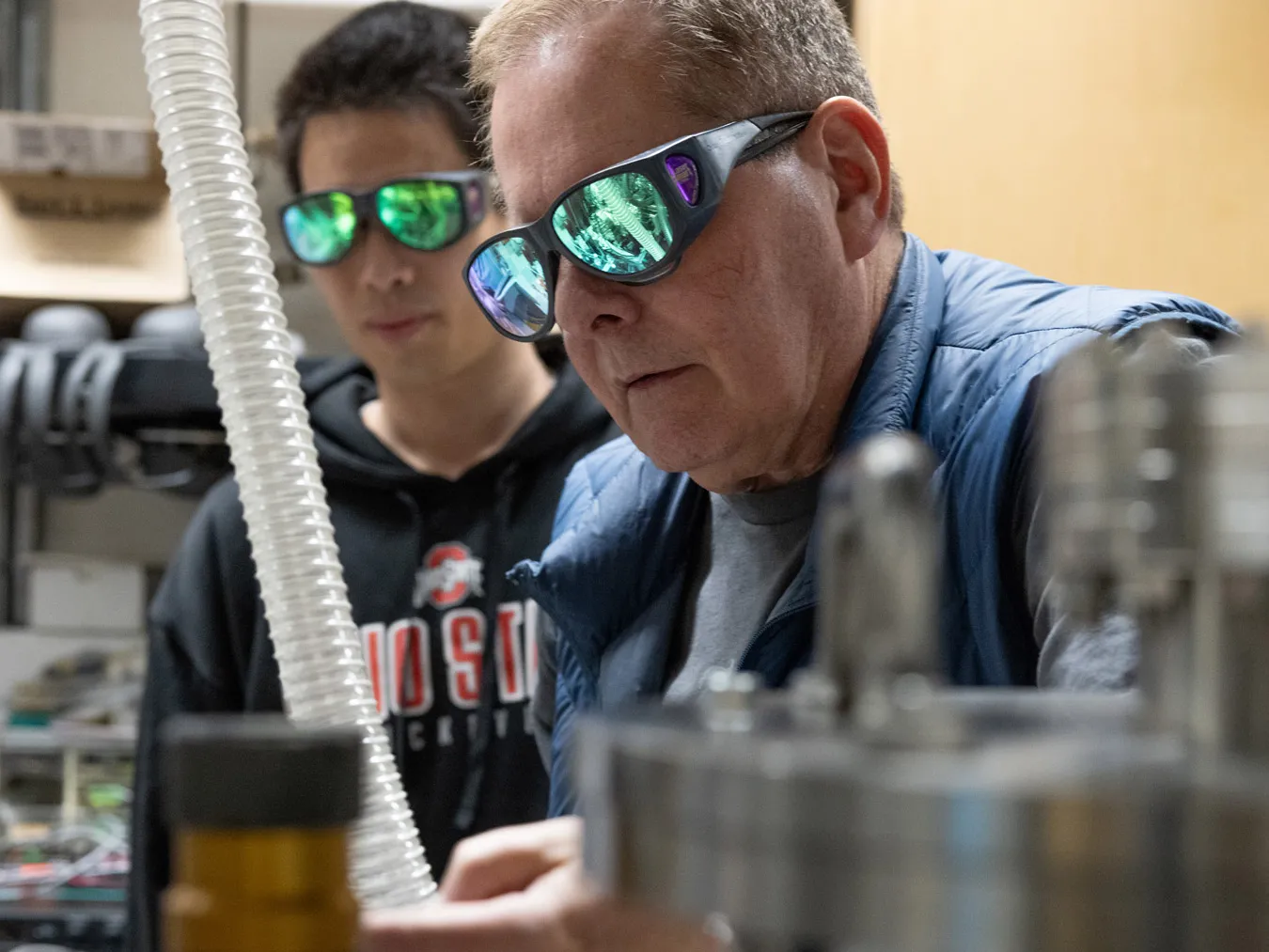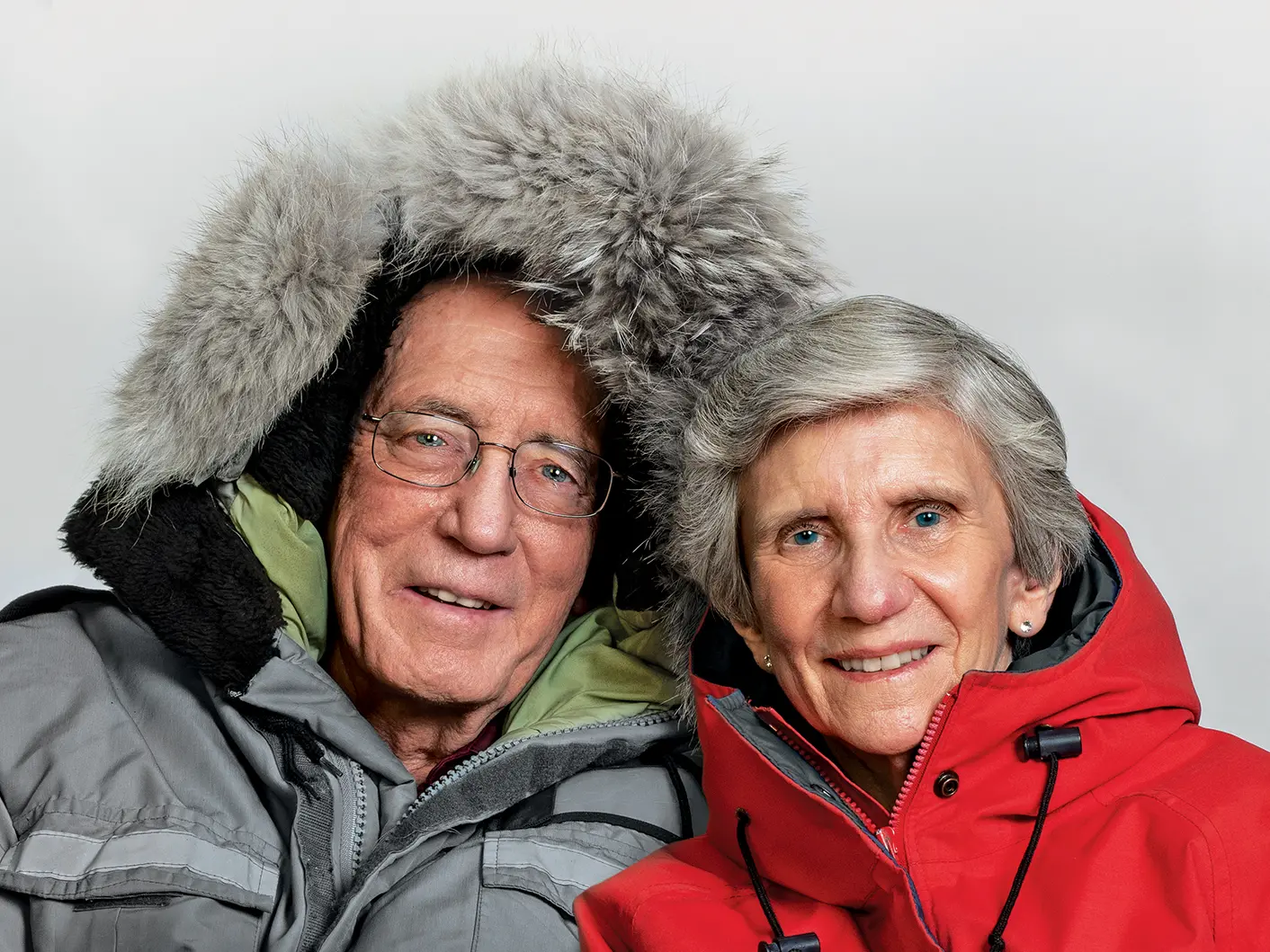5 for pride: These Buckeyes have a Nobel history, too
Pierre Agostini is the first sitting Ohio State professor to be named a Nobel Prize winner, and these professors and alumni also were honored.

This is the replica of his Nobel Prize medal that Pierre Agostini presented to Ohio State. (Photo by Jodi Miller)
Paul Flory ’31 MS, ’34 PhD, ’70 HON
Chemistry, 1974
Flory, who was introduced to the field of physical chemistry at Ohio State, went on to make so many critical discoveries about the molecular building blocks of rubber, plastics and synthetic fabrics that his Nobel cited “fundamental achievements.” His work led to synthetic tires introduced during World War II and to the plastics industry as a whole.
Today, one of his insights is known as the “Flory temperature.” The point at which polymers in a solvent are ideally balanced, it helps scientists compare and understand macromolecules, which are long chains of atoms or small molecules linked in a pattern.
Flory used the Nobel as a platform to push for human rights, particularly for dissident Soviet scientists.
Kenneth G. Wilson
Physics, 1982
After winning the Nobel Prize, Wilson was drawn to Ohio State by the Physics Department’s push to improve how the subject is taught. In his 20 years as an Ohio State professor, he also started a statewide initiative to make science and math teaching in K–12 schools more hands-on and understandable.
He was, after all, a master of breaking down complex problems. His Nobel-honored work makes it possible to calculate when matter changes phases, such as from liquid to gas. Sometimes, as systems approach those critical points, a huge number of variables fluctuate, requiring different scales to measure them. Calculations, thus, are complex, but Wilson’s approach simplified the process into manageable bites.
William A. Fowler ’33
Physics, 1983
Originally an engineering major, Fowler credited professors at Ohio State with turning him on to experimental physics. Raised in Lima, Ohio, he worked his way through college, learning how real laboratories operate but also waiting tables, washing dishes and cutting cheese and ham at a Saturday market stall.
His Nobel work was much more sophisticated — studying the nuclear reactions in a star’s evolution. By then a World War II veteran, Fowler showed how the intensity inside stars fuses elements into heavier elements. For example, turning hydrogen into helium. The process results in elements getting hurled into space, and those elements can go on to make up new planets and stars.
Rattan Lal ’68 PhD
Peace, 2007
This distinguished professor of soil science, an Ohio State teacher and researcher since 1987, is an expert on how no-till farming can help address climate change, food insecurity and water quality. When Al Gore and the Intergovernmental Panel on Climate Change shared the Nobel Peace Prize, “for their efforts to build up and disseminate greater knowledge about man-made climate change, and to lay the foundations for the measures that are needed to counteract such change,” Lal was recognized with a certificate for having contributed important science to the panel.
No-till farming is a type of regenerative agriculture that keeps carbon in soil, making it richer and preventing the formation of carbon dioxide, a potent greenhouse gas.
Lal’s work is so important, he has been recognized with several other prestigious prizes, as well. Those include the Japan Prize, one of the most prestigious honors in science and technology, in 2019; the World Food Prize, often called the Nobel of agriculture, in 2020; and India’s Padma Shri Award in 2021. He’s donated the winnings, totaling $1 million, to Ohio State.
Read more about Lal, in this Ohio State Alumni Magazine story.
